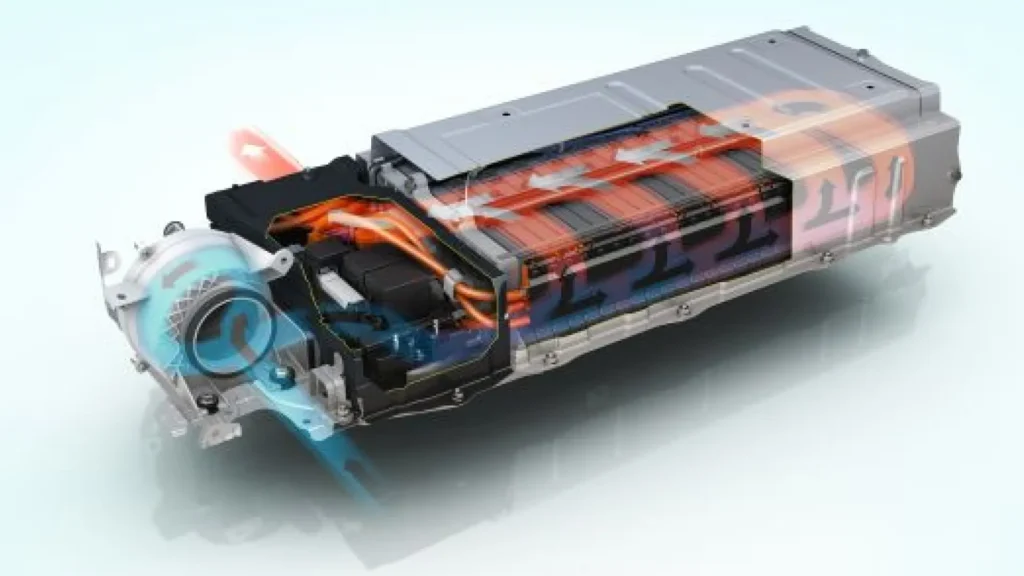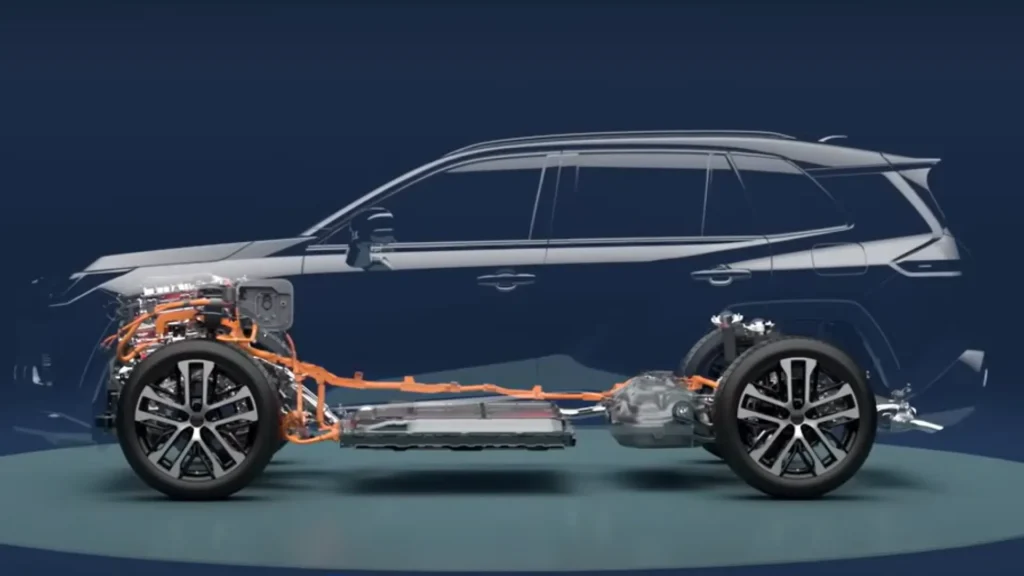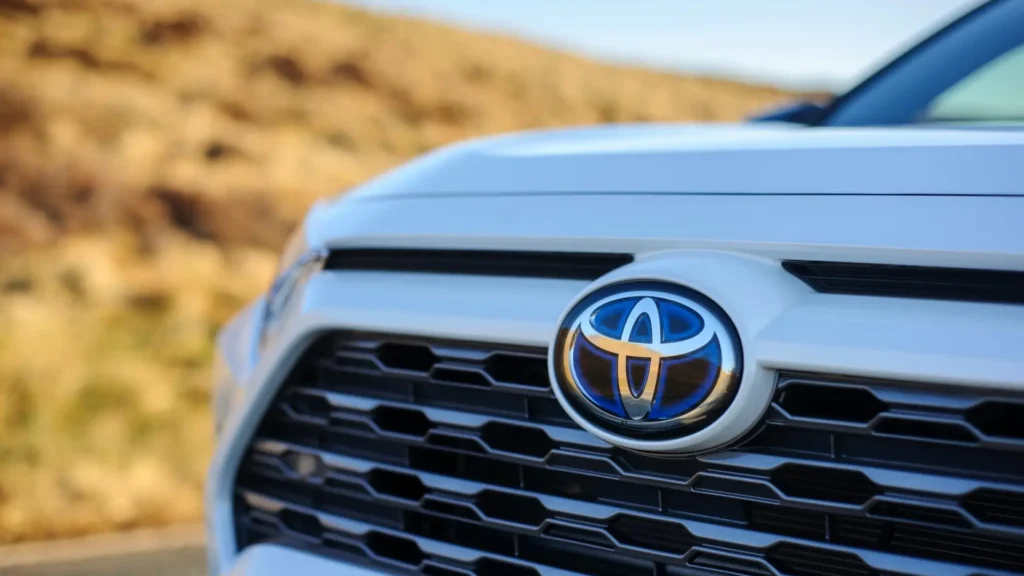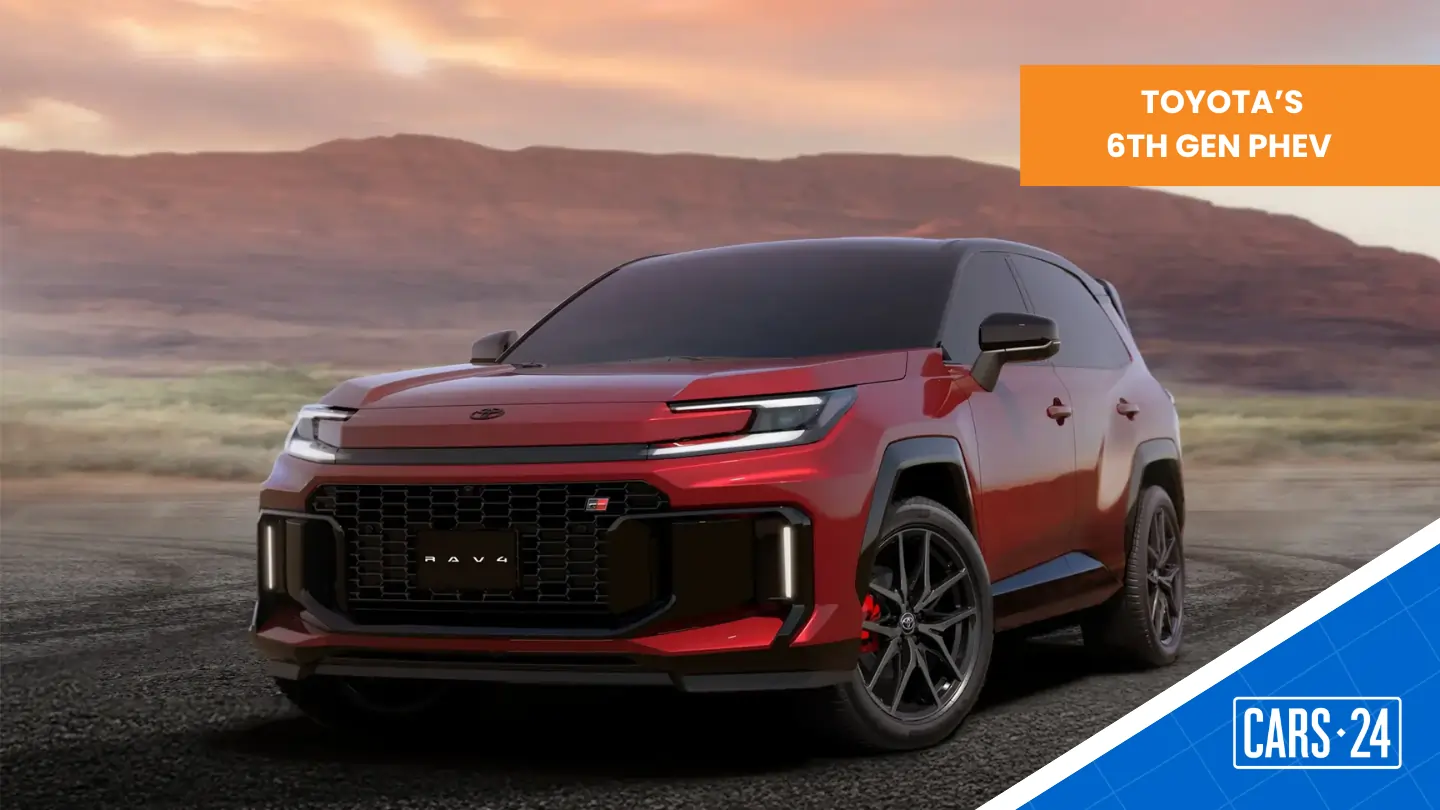Toyota’s sixth-generation PHEV system with the 2.5-litre petrol engine represents a comprehensive overhaul from its predecessor, focusing on efficiency, performance, and user convenience. The new system is designed to provide a seamless transition between electric and hybrid driving modes, catering to both daily commutes and long-distance journeys.
Key features of the 6th Generation PHEV System
1. Optimised layout for enhanced cabin space
The new PHEV system features a reconfigured layout that integrates the DC-DC converter into the Power Control Unit (PCU), which is now fitted into a smaller package and combined with the transaxle. By moving components previously located within the cabin to the engine compartment, the layout allows for a more spacious cabin and larger luggage capacity as well as improved vehicle aesthetics.

2. Extended electric-only driving range
Equipped with a newly developed high-capacity lithium-ion battery, based on BEV cell technology. This system offers increased energy capacity by 40% and extends electric-only driving range by upto 50%, depending on the model . This enhancement enables drivers to utilise EV mode for most daily activities, such as commuting and shopping, reducing reliance on the internal combustion engine and lowering emissions.
3. Improved driving dynamics
The PHEV system delivers powerful acceleration and responsive handling in all-wheel-drive configuration, thanks to the high-output electric motors and optimised weight distribution. The lower centre of gravity and enhanced body rigidity for new-gen Toyota PHEV models promises superior cornering stability and an intuitive driving experience. Precise control of propulsive force ensures high traction performance across various road conditions.
4. Advanced thermal management
A newly developed water-cooling thermal management system maintains the battery at optimal temperatures by switching between coolant circuits based on driving conditions. This system ensures consistent performance and efficiency, even in challenging environments. Furthermore, it supports rapid cabin heating after charging in low-temperature conditions, enhancing passenger comfort.

Toyota PHEV system: New vs Old
The sixth-generation PHEV system introduces several improvements over the previous iteration:
Battery capacity and electric range
The new system features a higher-capacity lithium-ion battery, extending the electric-only driving range. For instance, the 2026 RAV4 PHEV offers up to 150km of electric range, compared to 95km in the previous model.
Charging Capabilities
The latest PHEV supports DC fast charging, a feature not available in earlier models. This addition significantly reduces charging times, enhancing convenience for users.
Power Output
The new-generation PHEV system delivers up to 320 horsepower in the 2026 Toyota RAV4 GR Sport grade, surpassing the previous generation’s 302 horsepower, resulting in improved acceleration and overall performance.

Conclusion
Toyota’s sixth-generation plug-in hybrid system signifies a substantial advancement in hybrid vehicle technology. With its enhanced electric range, improved performance, and sophisticated thermal management, the new PHEV system offers a compelling option for drivers seeking efficiency without compromising on driving experience.

Comments
New Comment